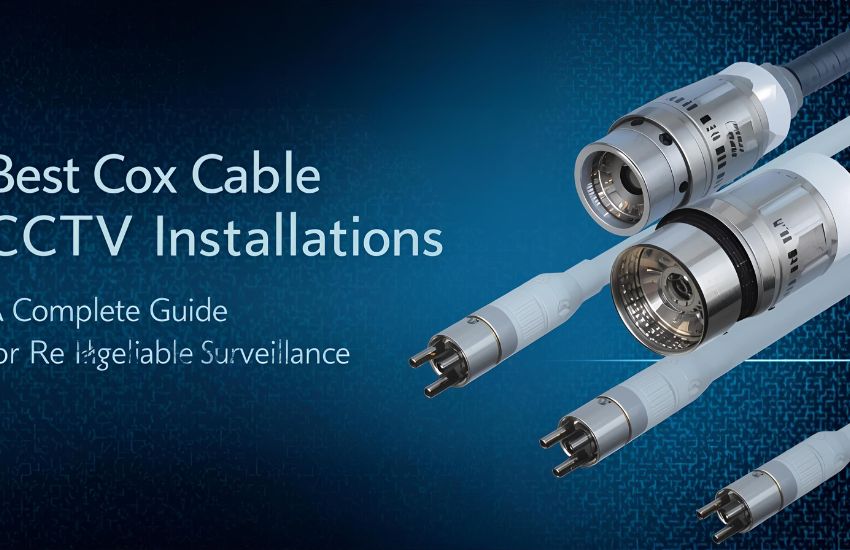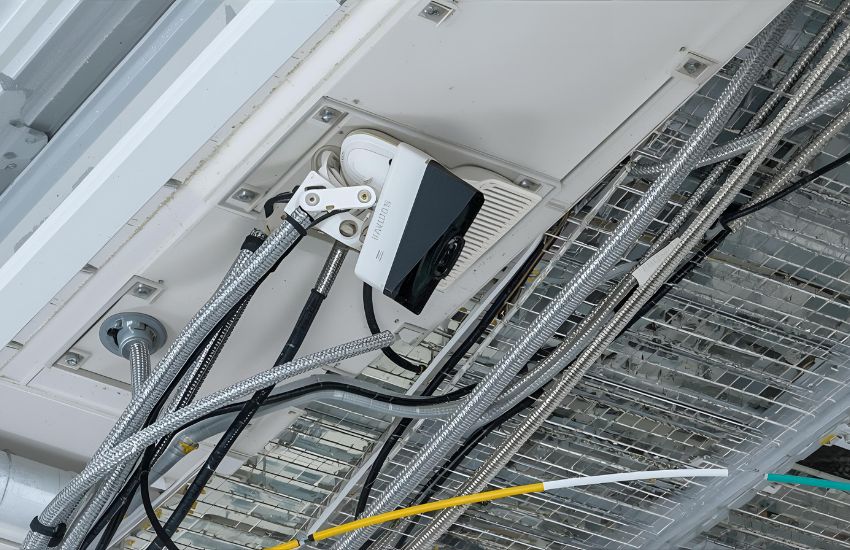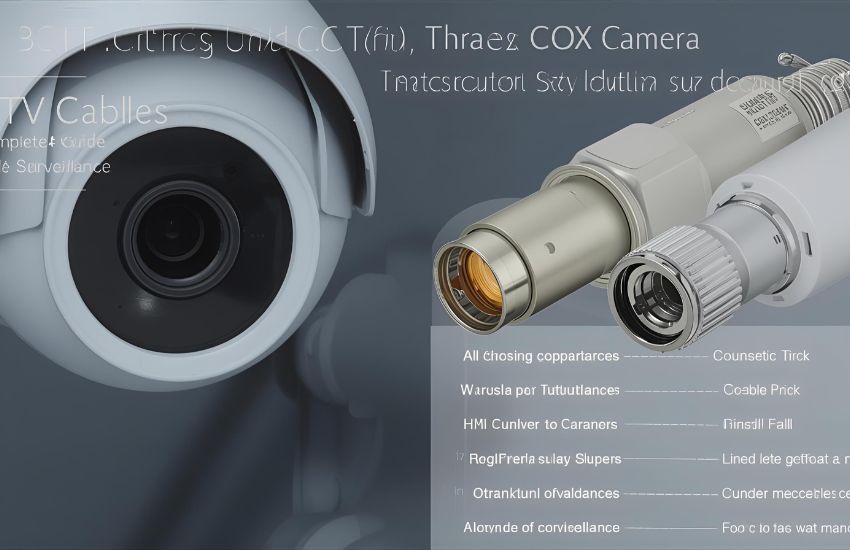Choosing the right cable for your CCTV camera installation can make or break the performance of your security camera system. Poor quality wiring leads to signal loss, interference, and unreliable footage—risks you can’t afford in critical surveillance setups. That’s why understanding the differences between various coaxial cable types is essential before making a decision.
The best coax cable for CCTV camera installations is RG59 with a solid copper core and 95% copper braid. It ensures minimal signal loss and supports HD CCTV technologies such as AHD, TVI, and CVI. For optimal performance, choose CATV grade cable made with high-quality shielding and conductor of CATV grade cable to ensure reliable surveillance.
In this guide, you’ll explore the pros and cons of popular CCTV cables, including their construction—like center conductors, braid types, and resistance levels such as 75 ohm—to help you choose the most reliable solution. From RG59 to RG6, learn how each coax cable supports CCTV video installation and why certain options stand out for consistent security camera performance.
Choosing the Right Coaxial Cable for CCTV: RG6 vs RG59 Explained

Selecting the proper coaxial cable for CCTV camera installations is critical to achieving clear, reliable video performance. Among the many options available, RG6 and RG59 are the two most common choices. While both are widely used in camera installations, they differ significantly in structure, performance, and suitability for specific setups.
Understanding RG59 and RG6
RG59 is traditionally used in CCTV video systems, especially those involving analog cameras. It features a thinner core and more flexible design, making it easier to route through tight spaces during camera installations. Because of its lower frequency range and shorter transmission capabilities, RG59 is ideal for shorter cable runs or indoor setups.
On the other hand, RG6 coax cable has a thicker conductor and enhanced shielding, making it more suitable for long-distance cable for CCTV camera installations. It’s often chosen for HD security systems or HD over coax systems that demand better signal integrity. If you’re planning outdoor or extended-length runs, RG6 is typically the more reliable option.
Which Is the Best Coax Cable for CCTV?
When deciding between RG59 and RG6, the primary considerations are distance and signal quality. For basic indoor systems with shorter runs, RG59 is sufficient and cost-effective. However, for high-resolution CCTV cables that need to travel farther, the RG6 coax cable offers less signal loss and better shielding. It’s often seen as the best coax cable for CCTV when future-proofing is a priority.
The Role of Siamese Cable in CCTV Setups
A Siamese cable combines both power and video lines into one jacket, simplifying the cable for CCTV camera installations. This is especially useful when installing multiple security camera cables where efficiency and neatness matter. Whether you choose RG59 or RG6, using a Siamese cable can streamline installation and reduce clutter.
Final Thoughts on RG59 vs RG6
Both RG59 and RG6 are dependable types of coaxial cable for CCTV, but choosing the right one depends on your specific camera installations. If you need to use RG59 or RG6, consider how far the signal must travel and whether you’re using analog cameras or modern high-definition models. The coax cable for CCTV camera systems you select plays a direct role in video quality and reliability, making it one of the most important cables for CCTV camera installations.
See more about...AI Face Recognition Security Camera
Siamese Cable vs Network Cable: Which Is Best for Security Camera Installations

When planning a security camera installation, one of the most important decisions you’ll make is choosing the right cable to connect your system. Two widely used options are Siamese cable and network cable, and understanding their strengths will help ensure a dependable setup. For analog cameras and HD over coax systems, Siamese cable is often the go-to solution due to its integrated design that carries both power and video signals in a single line. This simplifies the installation process and reduces the clutter of multiple security camera cables, especially in large-scale camera system deployments.
Siamese cable typically consists of a coaxial cable for CCTV video transmission alongside a separate power cable. This structure allows you to maintain a strong signal over reasonable distances without interference, making it highly effective for traditional CCTV video systems. It is especially compatible with coaxial cable for CCTV setups using analog cameras, where maintaining image quality and power consistency is critical. Installers who use RG59 or RG6 in these configurations often prefer the Siamese cable because it merges convenience with performance.
In contrast, network cable is commonly used for IP-based security system installations. While suitable for digital environments, it may not be ideal for cctv video transmission in systems designed for coaxial cable for CCTV use. For security camera cables handling HD security or analog cameras, Siamese cable remains a cost-effective, professional-grade solution.
Ultimately, if your camera system is based on analog cameras or you’re operating hd over coax systems, Siamese cable stands out as the more efficient and practical choice. Consider factors like cable length, power delivery, and compatibility when deciding between network cable and Siamese cable—because the right foundation ensures your security system performs at its best.
See more about...Search Surveillance Video by Event on Viewtron DVRs
How to Select a Reliable Security Camera Cable for Modern Surveillance Systems

Choosing the right cable for your surveillance system is vital to ensuring stable, high-quality CCTV video transmission. Whether you’re setting up a home security system or managing a multi-camera commercial surveillance system, the type of cable you choose directly impacts performance, reliability, and long-term efficiency.
Understand Your Camera System Requirements
Before selecting security camera cables, evaluate the type of camera system you’re using. If you’re working with analog cameras, a coaxial cable for CCTV—such as RG59 or RG6—is essential. These cables are specifically designed for transmitting video signals over varying distances while minimizing interference and maintaining signal integrity. On the other hand, HD over coax systems demand a higher-grade cable to handle increased resolution, making a coaxial cable for CCTV with better shielding and durability a must.
Choose Between RG59 and RG6
You’ll often need to use RG59 or RG6 for traditional CCTV video installations. RG59 works well for shorter runs and is typically easier to handle, while RG6 cable offers improved shielding and performance for longer distances or more demanding environments. Both types are common in camera system setups, but matching the cable length to the right specification ensures minimum signal loss.
Consider Siamese Cable for Power and Video
A Siamese cable is a practical solution when installing security camera cables that require both power and video transmission. This all-in-one design simplifies wiring and reduces clutter, particularly when installing multiple analog cameras or HD security cameras in a single location. Whether you opt for RG59 or RG6, using a Siamese cable provides a streamlined, efficient cabling method, especially for CCTV video and HD over coax systems.
Evaluate Cable Quality and System Compatibility
Always check the construction quality of your coaxial cable for CCTV. For maximum reliability, look for security camera cables made with solid copper conductors rather than copper-clad steel. True copper provides superior conductivity and is better suited for high-frequency applications, ensuring consistent CCTV video performance over time. Pay attention to cable length, shielding type, and compatibility with your chosen camera system and security system hardware.
Final Thoughts: Selecting the Best Cable
The best cable for your setup balances performance, ease of installation, and system compatibility. For most HD over coax systems and analog cameras, a high-quality coaxial cable for CCTV—ideally in the form of a Siamese cable—is the most practical and reliable security solution. By understanding your system’s demands and selecting the right cable type, you ensure the long-term efficiency and clarity of your CCTV video across all conditions.
See more about…360 Degree Surveillance Camera
Conclusion
Selecting the best cable for your surveillance system is a decision that directly affects the performance, reliability, and longevity of your entire setup. Whether you’re dealing with HD CCTV technologies or CCTV technologies such as AHD, choosing the right type of cable ensures optimal signal quality and reliable security in various environments.
When it comes to CCTV camera installations, a well-structured coaxial cable should be used to support high-resolution formats like 4K HD CCTV cameras and advanced systems similar to analog CCTV. For installations requiring both video and power transmission, Siamese RG6 cable proves to be a practical solution, providing the performance of coax with the convenience of a cable with power.
High-quality cables often use a conductor of CATV grade cable, which is crucial for maintaining signal strength over long distances. While CATV grade cable is made for television applications, its performance characteristics make it ideal for used for CCTV camera installations, especially when minimum video loss and reliable security are essential. The cable is a popular choice due to its durability, and when made with pure copper, it offers improved conductivity compared to alternatives.
Understanding the characteristics coax cable requires—such as flexibility, shielding, and conductor quality—helps ensure you’re investing in the best cable for your unique needs. Whether your surveillance system uses Ethernet cables or coaxial types, remember that the best cable provides consistent transmission, supports technologies such as AHD cameras, and adapts well to high-frequency requirements – similar to analog systems.
In conclusion, from rigid cable used for long runs to longer cable needs in large setups, make sure your choice supports your system’s full potential. For dependable performance, cable is the industry standard, and a properly selected coax cable is also your gateway to a robust, future-ready surveillance system.
See more about...LPR Camera Home Install
Frequently Asked Questions (Best Coax Cable for CCTV Camera Installations: A Complete Guide for Reliable Surveillance)
What is the best coaxial cable for CCTV?
The best coaxial cable for CCTV is RG59 with a solid copper core, as it provides excellent signal quality and minimal interference, making it ideal for video transmission over short to medium distances. For longer runs, RG6 is recommended due to its lower signal loss. Both are widely used, durable, and ensure reliable CCTV performance.
What is the best cable for CCTV cameras?
The best cable for CCTV cameras is RG59 coaxial cable with a power cable bundled, as it supports both video and power transmission over long distances with minimal signal loss. For IP cameras, Cat5e or Cat6 Ethernet cables are recommended, offering high-speed data transfer and Power over Ethernet (PoE) support, ensuring reliable performance and flexibility in installation.
What type of coax is used for CCTV?
The most common type of coaxial cable used for CCTV is RG59, as it is designed for short to medium distances and supports analog video signals with minimal loss. For longer runs, RG6 is preferred due to its lower signal attenuation. Both cables often come with a Siamese option, combining power and video in one line for convenience.
Which coaxial cable is the most commonly used link in CCTV systems?
The most commonly used coaxial cable in CCTV systems is RG59. It is preferred because it supports analog video signals effectively over short to medium distances, typically up to 750 feet. RG59 is cost-effective, flexible, and easy to install, making it ideal for most CCTV applications. For longer runs, RG6 may be used, but RG59 remains standard.
